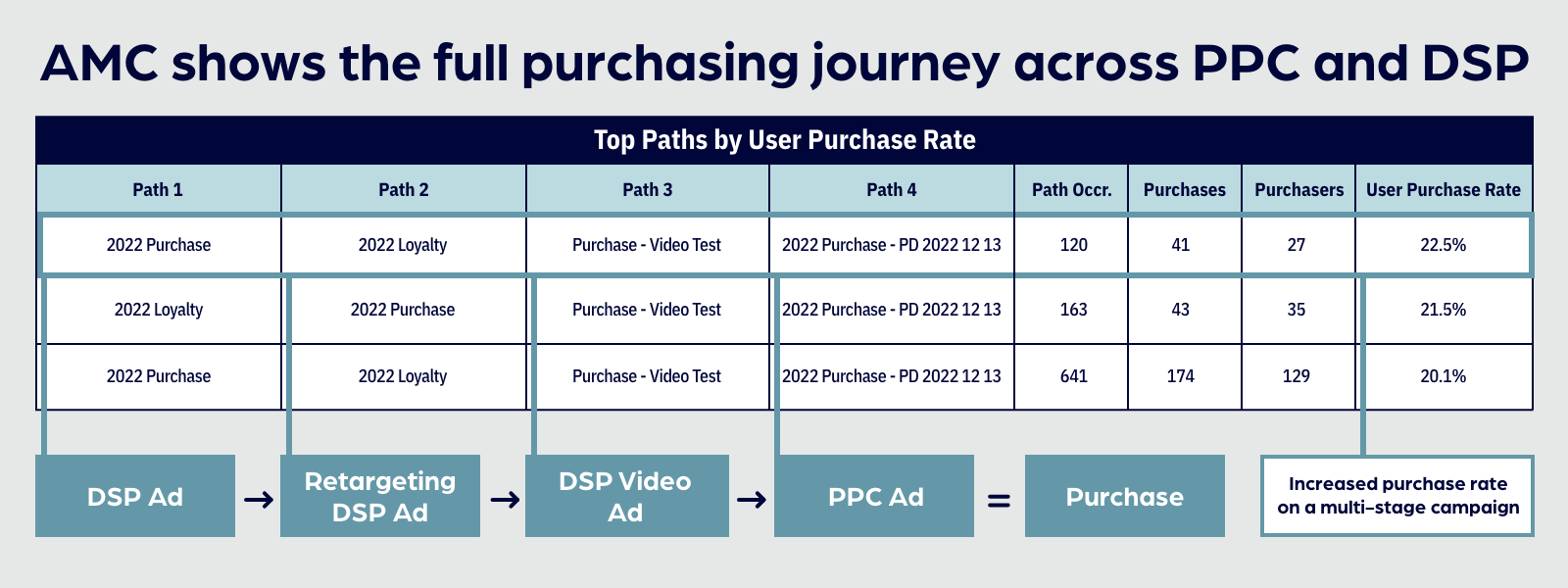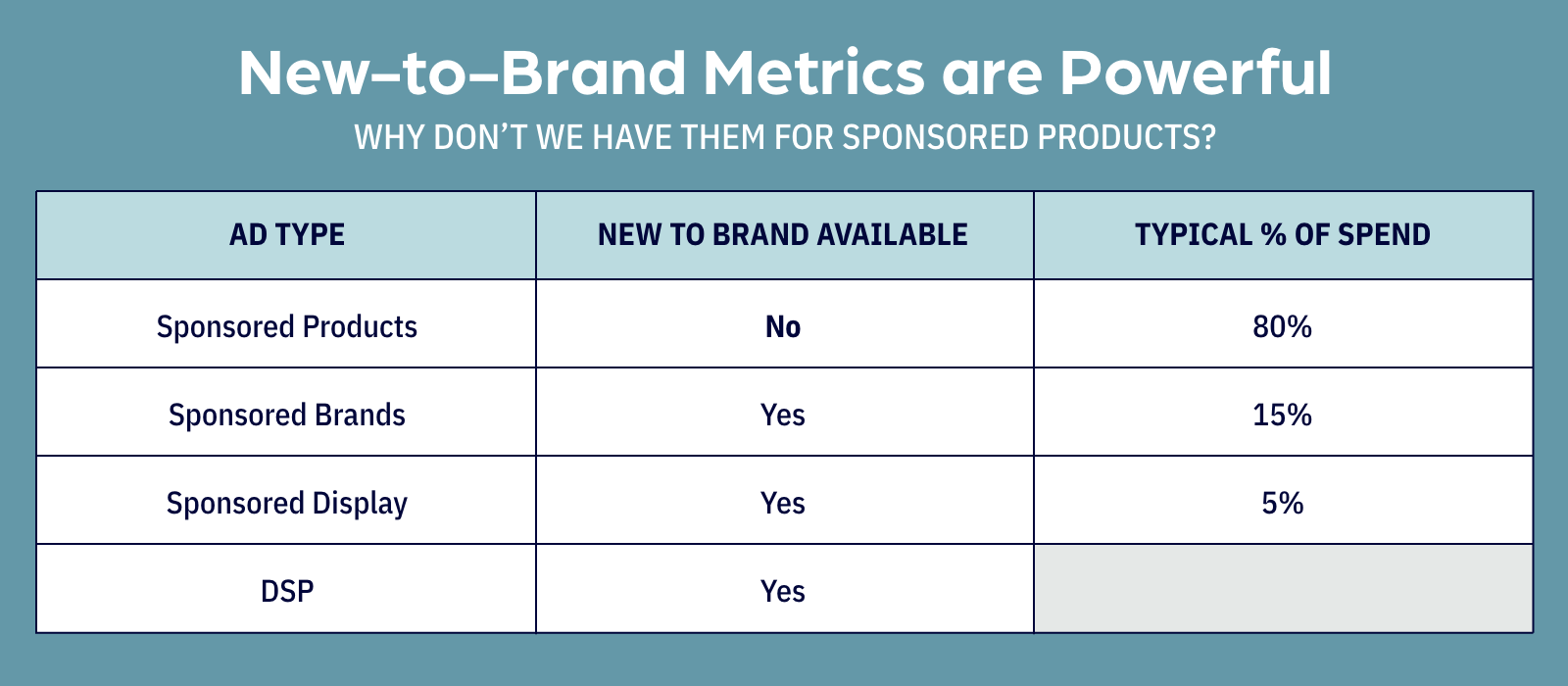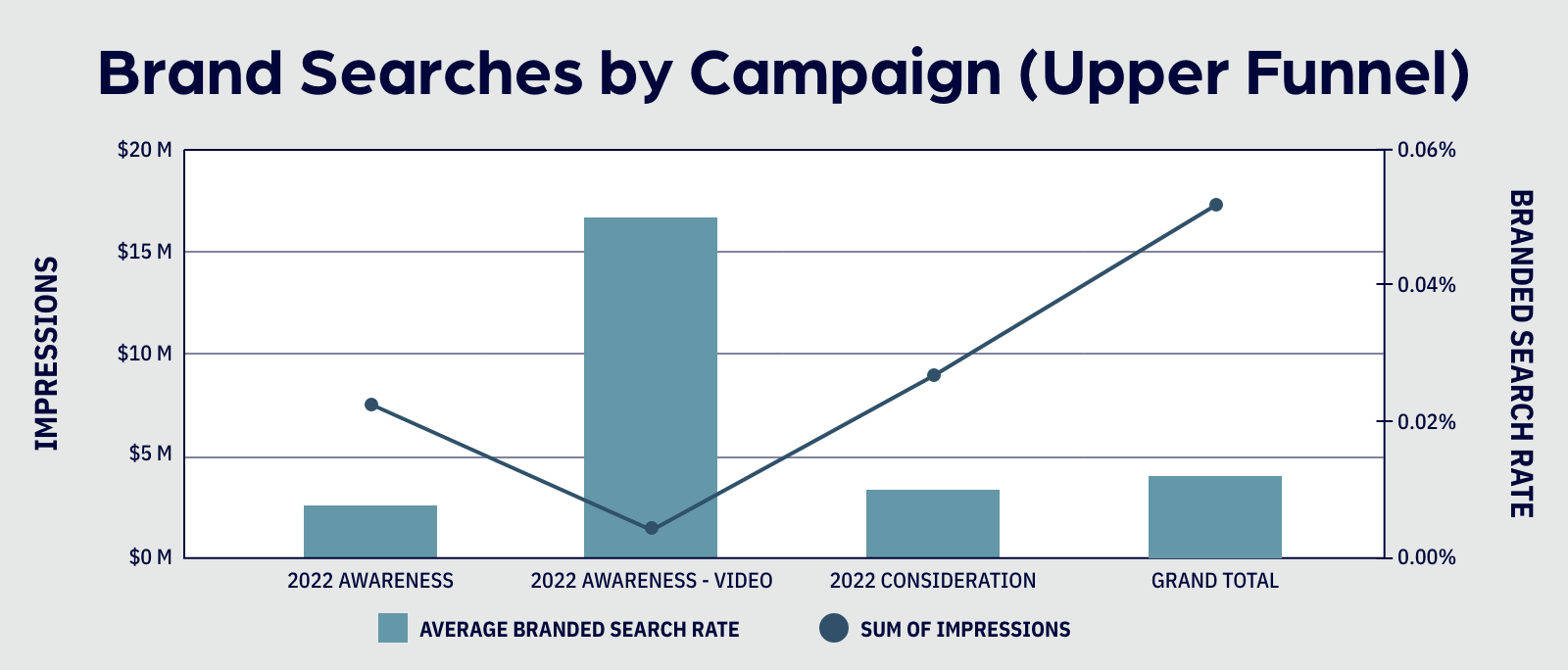For years, we have heard from brand owners who want more detailed information about how their ads are performing on Amazon. On their DTC sites, they are used to generating highly specific insights on paths to purchase, conversion rates, and more. But on the Amazon side of their business, they receive only aggregated reports and limited attribution data.
In 2019, Amazon quietly introduced a tool to change that. It’s called Amazon Marketing Cloud, or AMC for short, and it’s a sophisticated querying tool that lets brands sift through Amazon’s massive sandbox of data.
Through AMC, you can ask—and receive—highly specific information about clicks, impressions, device geography, conversion rates, paths to purchase, and more. You can use AMC to figure out which of your ads most impacted a customer’s ultimate purchase of your product, or how a DSP ad influenced branded searches on Amazon.
What can AMC do for you?
In AMC, you are essentially asking questions of Amazon’s data. To use it well, you have to know in advance which questions you’d like answered.
Here are a few questions we recommend asking.
1. “What does my advertising funnel really look like?”
Want to know how the top of your ad funnel trickles down into sales? AMC can give you a sophisticated sense. Using an AMC query called Path Conversion by Campaign, brands can sleuth out the first touchpoint that a customer had with them. What was the first ad they interacted with? What about the second, third, and fourth?
With AMC, you can map out various paths to purchase that your customers have taken, and then you can ask questions like, which of these paths had the highest user purchase rate?
Understanding how customers discover your products has the added benefit of determining which of your ads are the most valuable.

2. “Why can’t I know how many new customers I acquire consistently?”
One of the stranger quirks of Amazon is that it doesn’t provide new-to-brand metrics on Sponsored Product ads. Although other Amazon ad formats can tell you how many of your conversions are from people who are new to your brand, Sponsored Products doesn’t have this capability built in. This oversight is especially frustrating to brand owners because Sponsored Product ads are generally 70-80% of ad spend.
With AMC, however, you can finally unlock those new-to-brand metrics for your Sponsored Product ads.

3. “Are my Amazon DSP ads really driving consideration?”
Amazon DSP allows brands to run ads on platforms other than Amazon.com, including on Twitch and Freevee. Though DSP ads can be somewhat costly, they come with rich insights, especially when paired with AMC.
Using AMC, you can track how your ads are impacting potential customers on a granular level. Not only can AMC show you your conversion rates, but it can also measure, for instance, a spike in branded searches.
Through AMC, one Acadia client found that, when they placed an ad on a streaming network, their branded searches shot up. Though the campaign itself showed a low return on ad spend, the client was able to discover that their ad increased overall brand awareness.

What are the challenges with AMC?
Amazon Marketing Cloud does have a few notable limitations:
- Your lookback window is limited to 90 days. With AMC, you can only generate reports based on data from the last 90 days. That means brands that want to be able to regularly compare YoY changes, or even measure the seasonality of their ads, need to generate reports manually throughout the year.
- You should be consistently using Amazon DSP. AMC is most valuable for brands that regularly run DSP ads. If you are throttling your DSP spend throughout a 90-day period, your data might be more scattershot and less useful to analyze.
- Your brand needs to be reasonably popular. For privacy reasons, AMC will only return a query if there are more than 100 users in the results. That shouldn’t be an issue for most brands, but it may be worth keeping in mind for very small companies without a lot of customers.
- You need to know SQL. Most importantly, to use AMC well, you need to have a strong coding knowledge. Accessing most AMC data requires the use of SQL to pose queries, so you have to be familiar with that programming language. You also need to take the raw data and visualize it in order to understand what the data is actually telling you.
Learn more about AMC with Acadia
AMC is not a self-serve tool that brands can easily set up on their own. Using it—and using it well—requires some expertise.
The beauty of AMC is its level of customization, for those who know what questions to ask. Amazon is giving you access to its data sandbox, but you might need help sifting through it all. Request a consultation with Acadia to learn more about how we can help.

